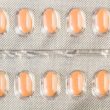Currently, the number of transcatheter aortic valve replacement (TAVR) procedures is increasing as it expands towards a lower-risk younger population. Therefore, continuous technological advancement is imperative to reduce post-procedural complications. The Food and Drug Administration (FDA) has approved the SavyWire, a preformed 0.035-gauge guidewire that can perform three essential functions: 1) it facilitates prosthesis transportation<a href="https://solaci.org/en/2024/03/20/guidewire-pacing-and-pressure-assessment-in-tavr-the-safe-tavi-study/" title="Read more" >...</a>
Use of Transjugular Echocardiography in TAVR
TAVR is a well-established course of treatment, increasingly indicated in lower risk populations. However, one of the challenges associated with self-expanding TAVR, compared against balloon expandable TAVR and SAVR, is the frequent need for definite permanent pacemaker implantation (PPI). High implantation, also known as cusp overlapping (COT), has been shown to reduce the need for<a href="https://solaci.org/en/2024/03/06/use-of-transjugular-echocardiography-in-tavr/" title="Read more" >...</a>
Post TAVR Long Term Outcomes in Patients with Chronic Inflammatory Disease
Patients suffering from immune-mediated chronic inflammatory disease (CID) face a high risk of developing heart disease, including aortic valve disease. Inflammatory vascular disease when triggered by an autoimmune condition, can prompt a harmful response leading to valve degeneration, with increased calcification and fibrosis, and the associated progression of stenosis, failure or both. Prior research has<a href="https://solaci.org/en/2024/03/04/post-tavr-long-term-outcomes-in-patients-with-chronic-inflammatory-disease/" title="Read more" >...</a>
Short-Term Outcomes of TAVR in Asymptomatic or Minimally Symptomatic Patients
Aortic valve replacement (AVR) is indicated for symptomatic aortic stenosis (AS), while close follow-up is recommended for asymptomatic patients, unless they have elevated aortic gradients, low ejection fraction, or abnormal stress tests. However, the optimal timing to perform AVR is uncertain, especially with recent evidence suggesting that patients with AS associated with signs of myocardial<a href="https://solaci.org/en/2024/02/21/short-term-outcomes-of-tavr-in-asymptomatic-or-minimally-symptomatic-patients/" title="Read more" >...</a>
TAVR in Low Risk Patients: 10 Year Evolution
The Treatment of severe aortic stenosis has experienced a significant revolution with TAVR, especially in high and intermediate risk patients, and it is now extending to low risk patients. In the US, nearly half of patients under 64 are being treated with TAVR. One of the fundamental questions that still remains unanswered revolves around device<a href="https://solaci.org/en/2024/02/14/tavr-in-low-risk-patients-10-year-evolution/" title="Read more" >...</a>
Does Post-Dilation in TAVR Affect its Long-Term Outcomes?
Transcatheter aortic valve replacement (TAVR) has widely demonstrated its significant benefits, both in high-risk and inoperable patients, as well as in those with intermediate and low risk. While paravalvular regurgitation has been a challenge, its management has improved with operator experience and a deeper understanding of CT angiographies. However, in cases of regurgitation, elevated gradient,<a href="https://solaci.org/en/2024/02/01/does-post-dilation-in-tavr-affect-its-long-term-outcomes/" title="Read more" >...</a>
Coronary Artery Disease in TAVR: Unsolved Dilemma
Aortic stenosis shares risk factors with coronary artery disease (CAD), and its prevalence varies according to age, reaching approximately 50% or more in some registries. Deciding when to treat and the need for percutaneous intervention presents a challenge. It has been established that epicardial stenosis at proximal level, or the medial segment, requires intervention, especially<a href="https://solaci.org/en/2024/01/30/coronary-artery-disease-in-tavr-unsolved-dilemma/" title="Read more" >...</a>
Use of Apixaban and Post TAVR Valve Thrombosis
TAVR can be associated to early valve thrombosis, characterized by thrombi formation near or attached to the prosthetic valve, with or without valve dysfunction. This dysfunction is associated with increased leaf thickening and reduced leaflet motion, as well as reduced orifice area or increased transvalvular gradient. Triggered multislice CT allows dynamic valve assessment and thrombosis<a href="https://solaci.org/en/2024/01/25/use-of-apixaban-and-post-tavr-valve-thrombosis/" title="Read more" >...</a>
Carotid Stenosis and TAVR
Aortic Stenosis affects over 5% of the population over 65. Even though TAVR has advanced in the treatment of this disease, many patients present carotid aortic stenosis (CAS), which involves additional surgical risk. This risk has not been thoroughly assessed in the context of TAVR. A meta-analysis was carried out including 5 observational studies with<a href="https://solaci.org/en/2024/01/12/carotid-stenosis-and-tavr/" title="Read more" >...</a>
TAVR: High Implantation of Self-Expanding Valves Directly Impacts ECG
TAVR has been shown beneficial, especially in high risk or inoperable patients. However, there are limitations to its use, especially with self-expanding valves, which are the need for pacemaker implantation and ECG changes after procedure. To address this matter, researchers assessed the right and left cusp overlap effect on 254 patients undergoing TAVR with self-expanding<a href="https://solaci.org/en/2024/01/11/tavr-high-implantation-of-self-expanding-valves-directly-impacts-ecg/" title="Read more" >...</a>









